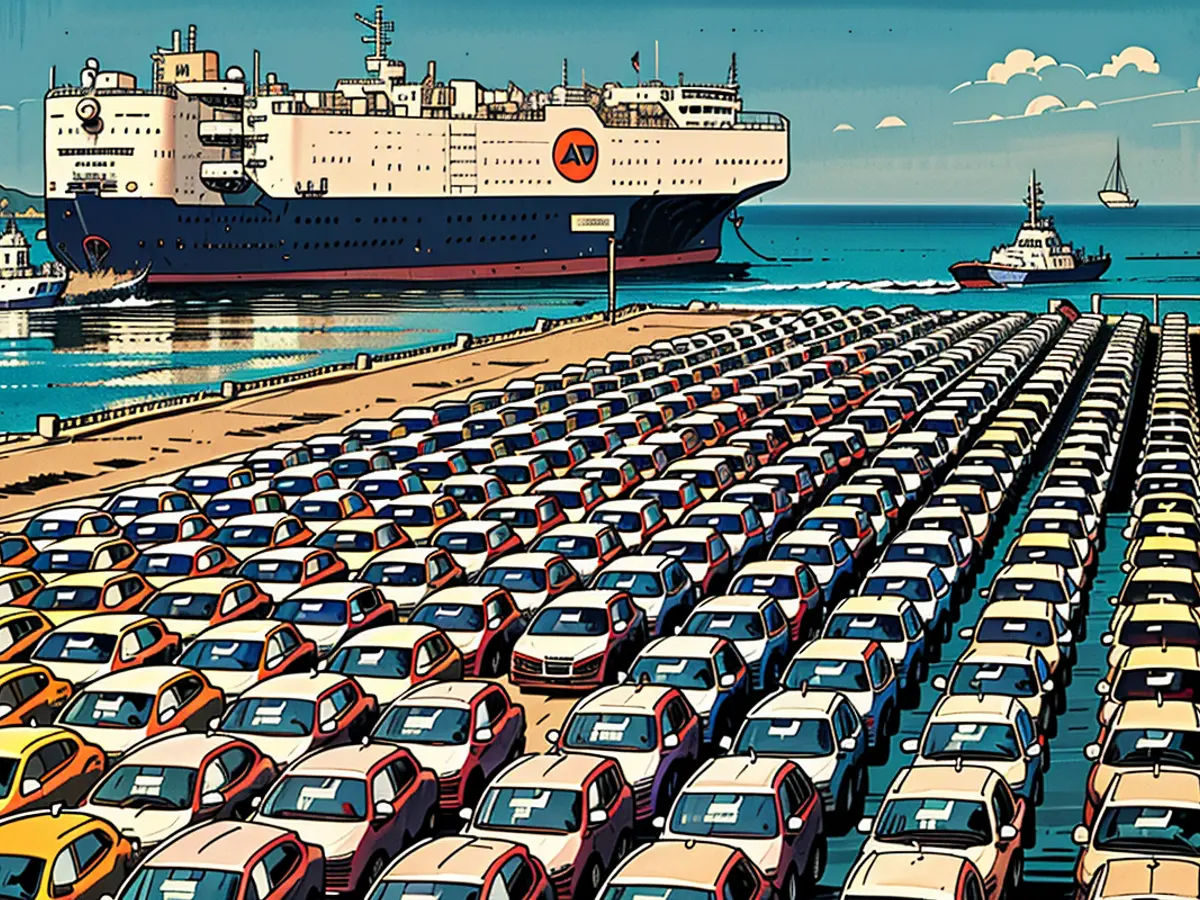Three potential hazards to worldwide economic development
The World Bank has recently improved its forecast for global economic growth in 2024, predicting it to remain at 2.6%. However, it warned that the growth rate won't be uniform, matching the rates seen prior to the Covid pandemic.
Indermit Gill, the World Bank's chief economist, stated that despite the escalations caused by the pandemic, conflicts, inflation, and monetary tightening, the overall global economic growth seems to be stabilizing. He added that the future for the poorest nations is particularly concerning.
The World Bank identified three potential risks for this growth:
- High interest rates: The World Bank projected that global inflation could decrease to 3.5% this year and 2.9% in 2025. It expects global interest rates to average 4% in the years 2025 and 2026. These interest rates are significantly higher than the average rates before the pandemic. The European Central Bank and Bank of Canada have already lowered their key interest rates recently. The Federal Reserve, however, has not followed suit, maintaining steady rates for the seventh consecutive time on Wednesday. Additionally, the Fed reduced its projections for rate cuts this year from three to one. While acknowledging progress on controlling prices, Chair Jerome Powell noted that the central bank would require inflation to be closer to its 2% target before easing monetary policy. Heightened interest rates may result in tighter financial conditions and weaker growth in developing economies.
- Geopolitical tensions: The Russian-Ukrainian war and the Israel-Hamas conflict could potentially slow global growth by raising oil prices and shipping costs. Oil prices have decreased since their initial spikes due to both conflicts, with international crude futures settling at $82.60 per barrel on Wednesday. Kose, the World Bank's deputy chief economist, expressed concerns about container vessel attacks in the Red Sea, which are causing shipping delays and increasing costs: "Escalating conflict could also dent global business and consumer sentiment, and increase risk aversion, weighing on demand and growth."
- Political changes: Considering the elections happening or scheduled for various countries like India, Mexico, the United States, France, and the United Kingdom, among others, various political changes may create uncertainty and inward-looking policies that could hinder trade prospects and economic activity. Trade tensions are already rising between major global economies. For instance, China has expressed opposition to new US tariffs on $18 billion worth of Chinese electric vehicles and other products, highlighting the potential consequences on the relationship between the two economic superpowers. Moreover, the European Commission is increasing tariffs on EVs imported from China, provoking a response from Beijing. This political instability may negatively affect trade and growth prospects.
Regarding menu price increases, grocery prices remained flat in May, after seeing a decrease in the month before. However, menu prices at sit-down restaurants increased by 0.4% from April to May, and increased by 0.2% at limited service spots (including fast food and fast casual joints). Over the past twelve months, grocery prices rose 1%, while menu prices at full-service, or sit-down, restaurants rose 3.5%. They rose 4.5% at limited service restaurants.
As customers have been faced with increasing costs, they have started to pull back on spending and express their frustration online. In response, restaurant chains have been raising their menu prices each year, but they seem to be doing so at an accelerated pace. Restaurant executives insisted that these hikes haven't deterred customers, but there have been instances where they've had to reverse course and defend their prices. For instance, McDonald's USA President Joe Erlinger noted that prices have increased by about 21% over the past five years, though it's marginally lower than overall inflation. However, he also recognized that some locations may be charging significantly more for Big Mac meals. Controversies such as $3 hash browns and $16 meals on TikTok are examples of these concerns.
### TikTok and the Quest for Young Voters: Are Politicians Out of Touch?
With 170 million users in the US alone, TikTok has undoubtedly gained a lot of traction as a platform for politics. However, a recent survey by Pew Research Center and the John S. and James L. Knight Foundation reveals that most TikTok users are not overly impressed by politicians vying for their attention.
In recent months, politicians have been flocking to TikTok in a bid to attract the youth vote. Former President Trump, for example, created a TikTok account that quickly amassed 6 million followers. On the other hand, President Biden's campaign boasts over 373,000 followers on TikTok, with more than 200 videos posted so far.
However, there are also growing concerns about the Chinese government's potential influence over TikTok due to its connection with the app's parent company. As a result, some politicians are warning about the dangers of China potentially accessing the personal data of TikTok users in order to interfere with US politics on a grand scale. TikTok, for its part, denies ever having shared US user data with the Chinese government and has filed a lawsuit to prevent a ban on the app in the US.
Nevertheless, the findings of Pew's surveys suggest that politics may not hold as much sway over TikTok as some may have thought.
Read more here.







